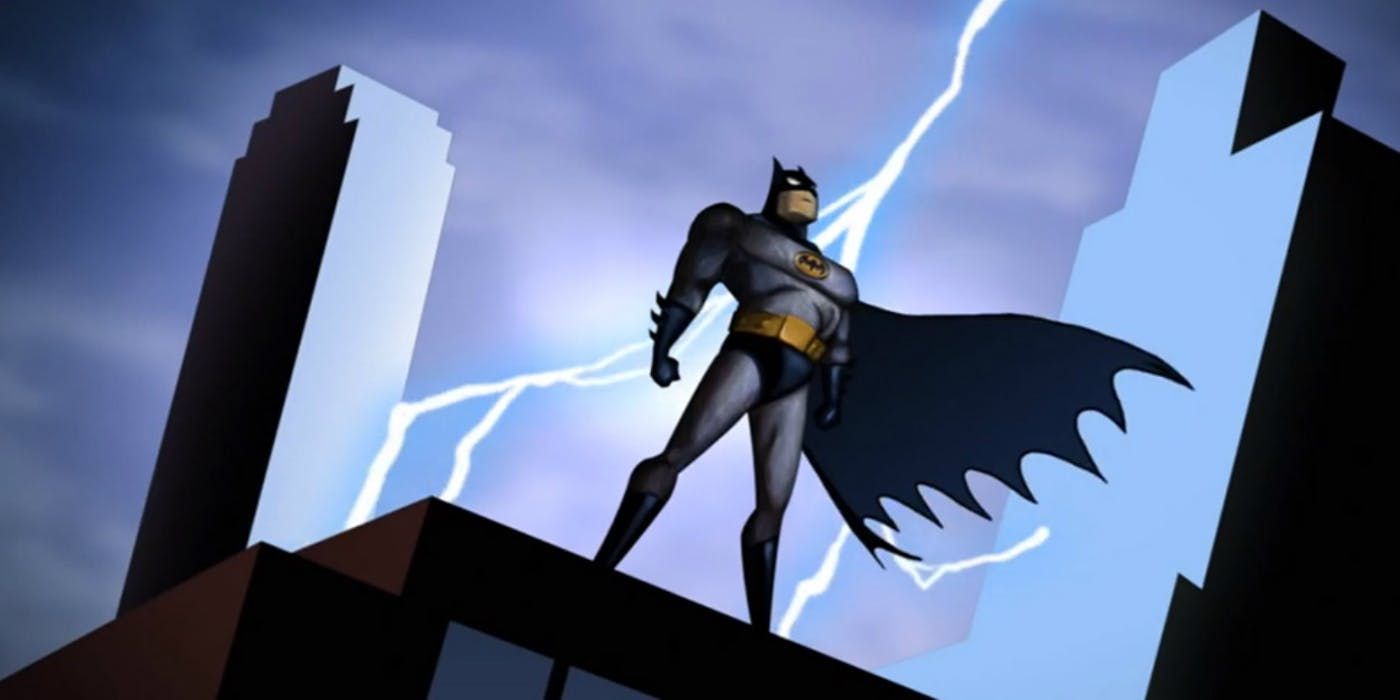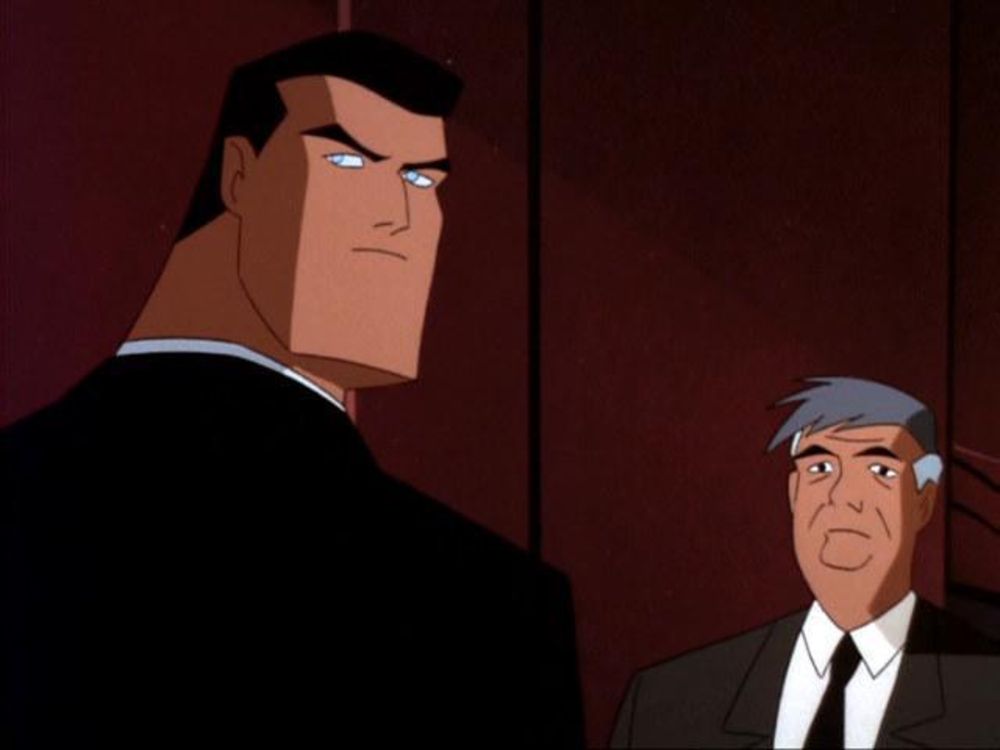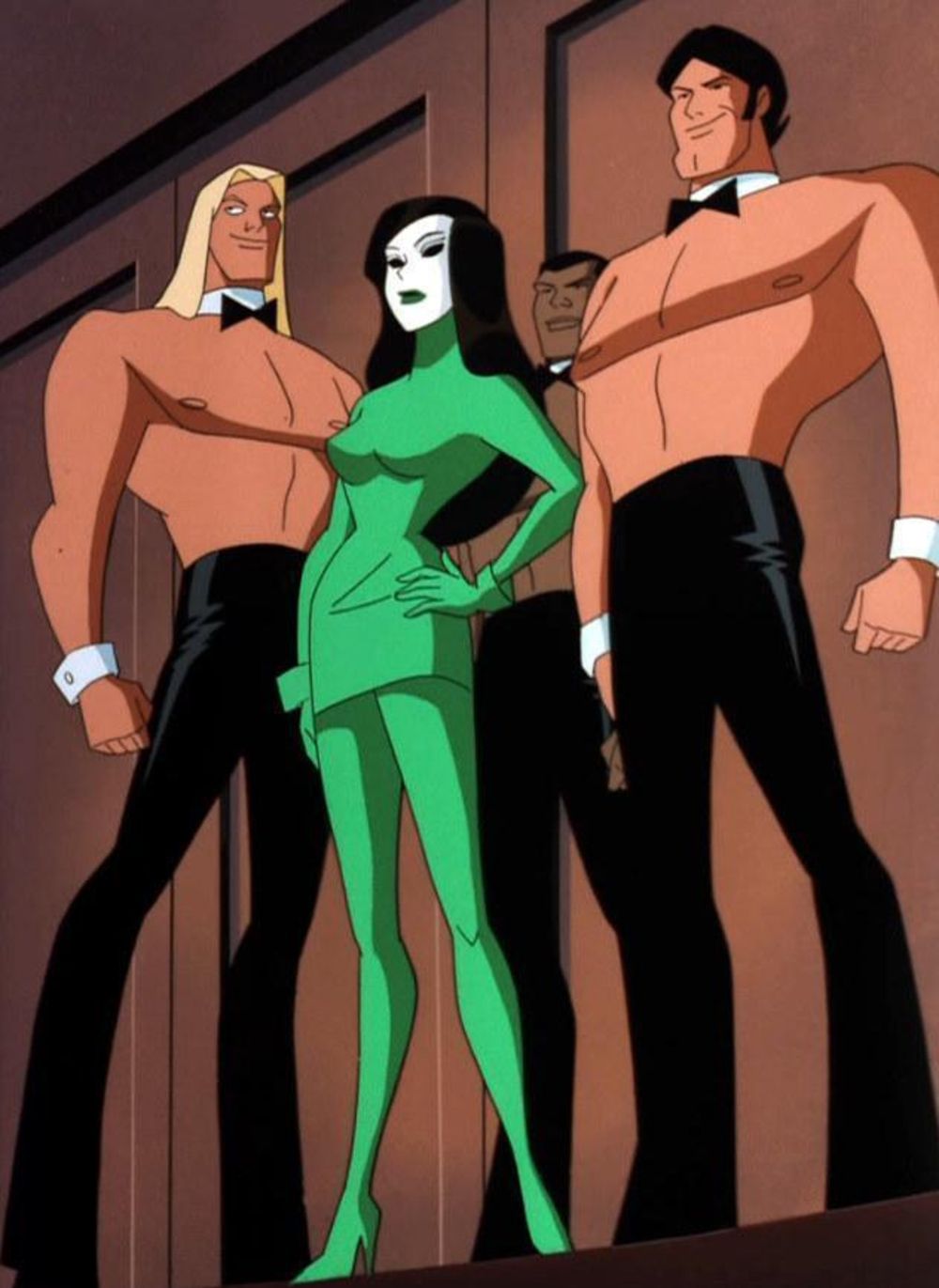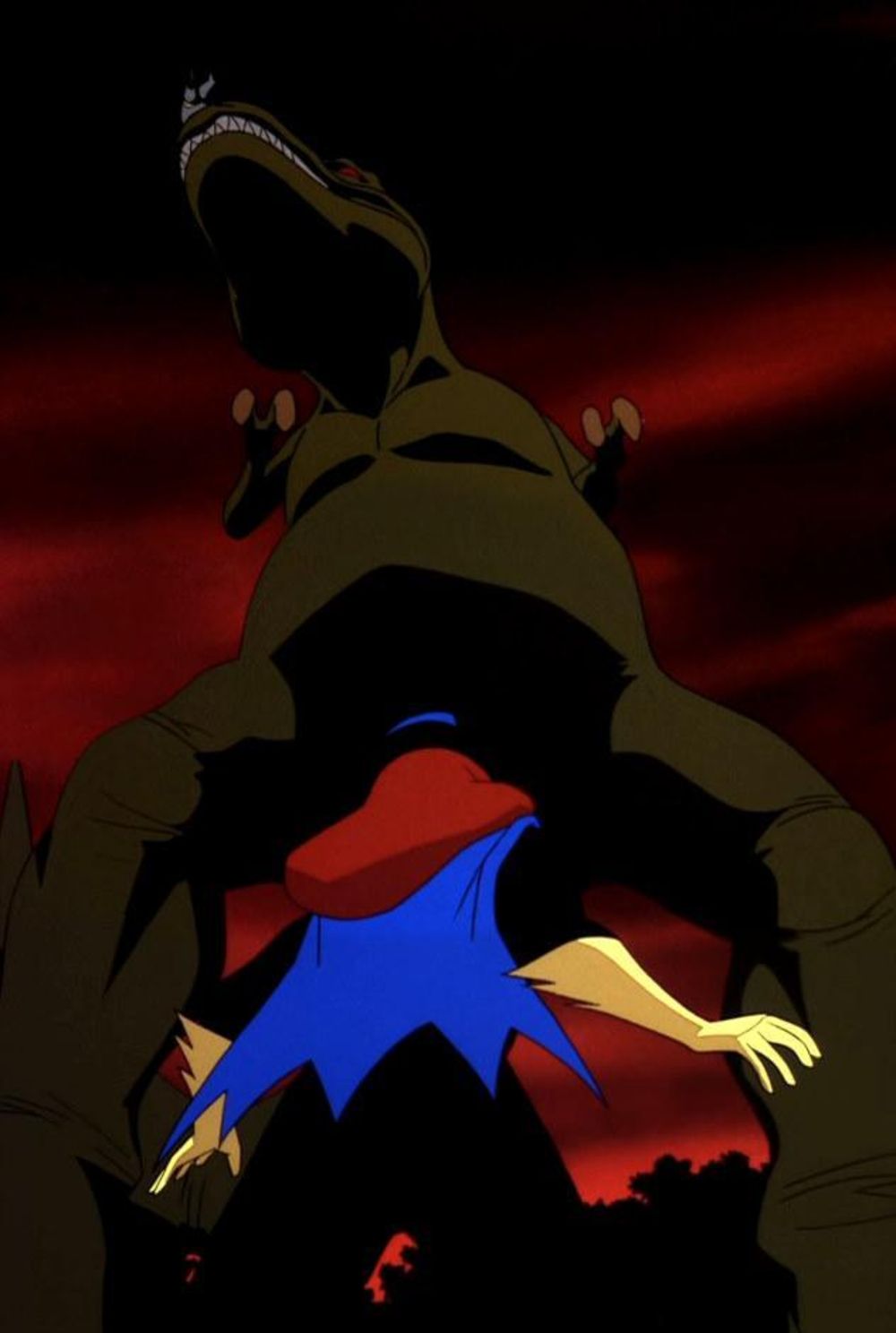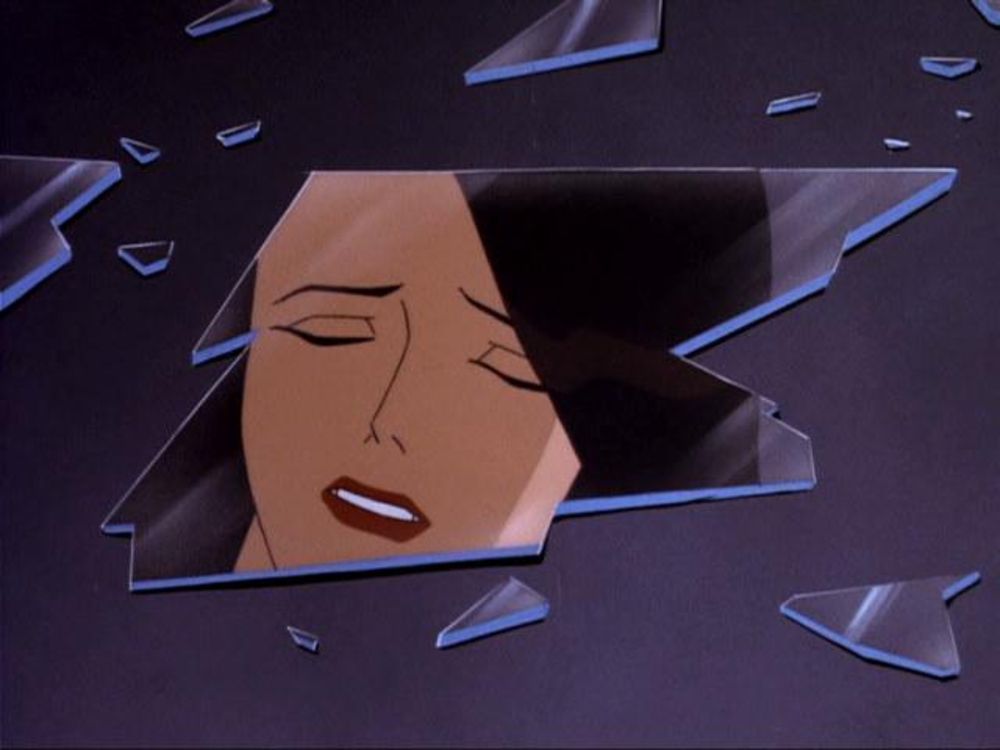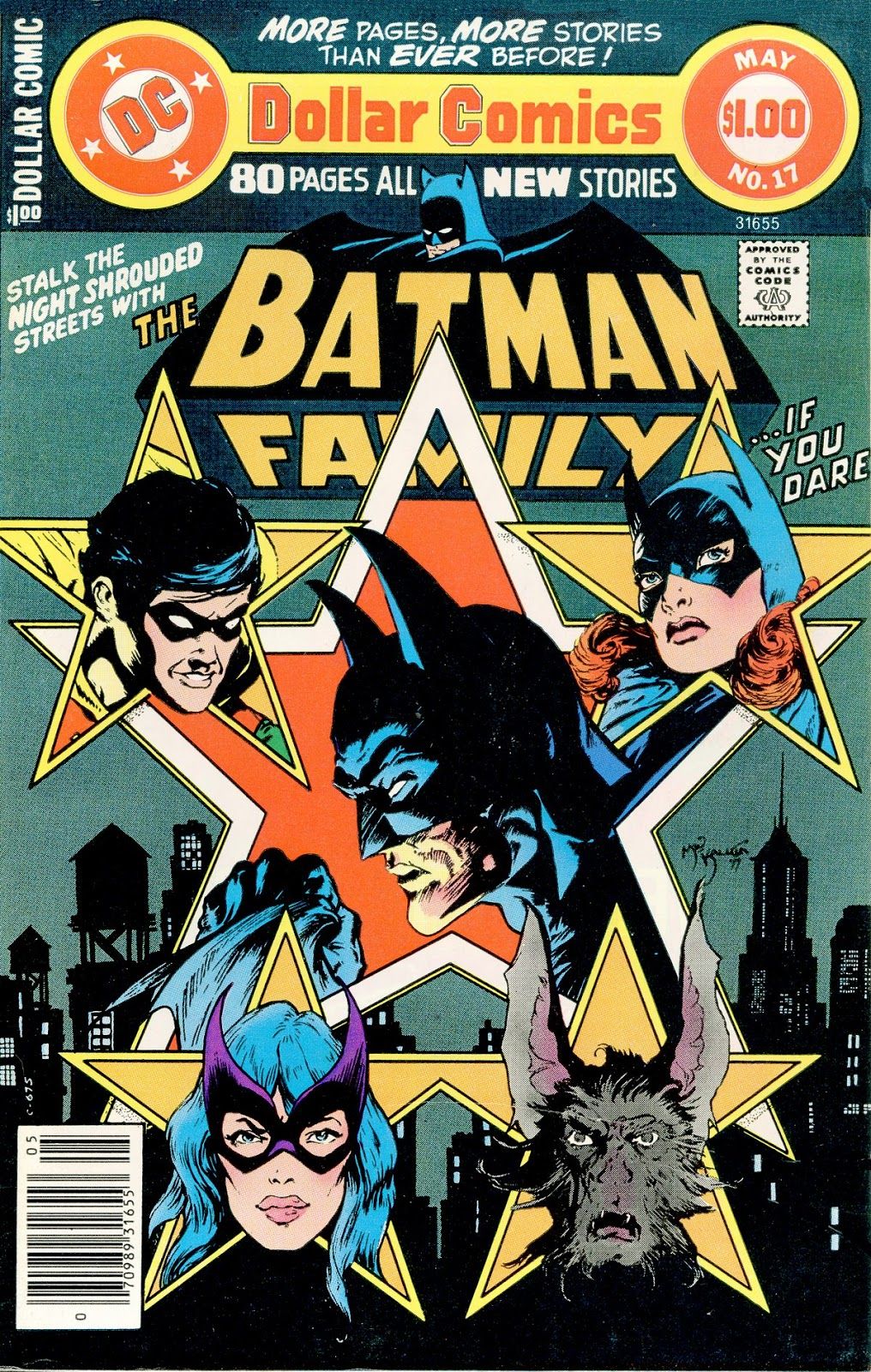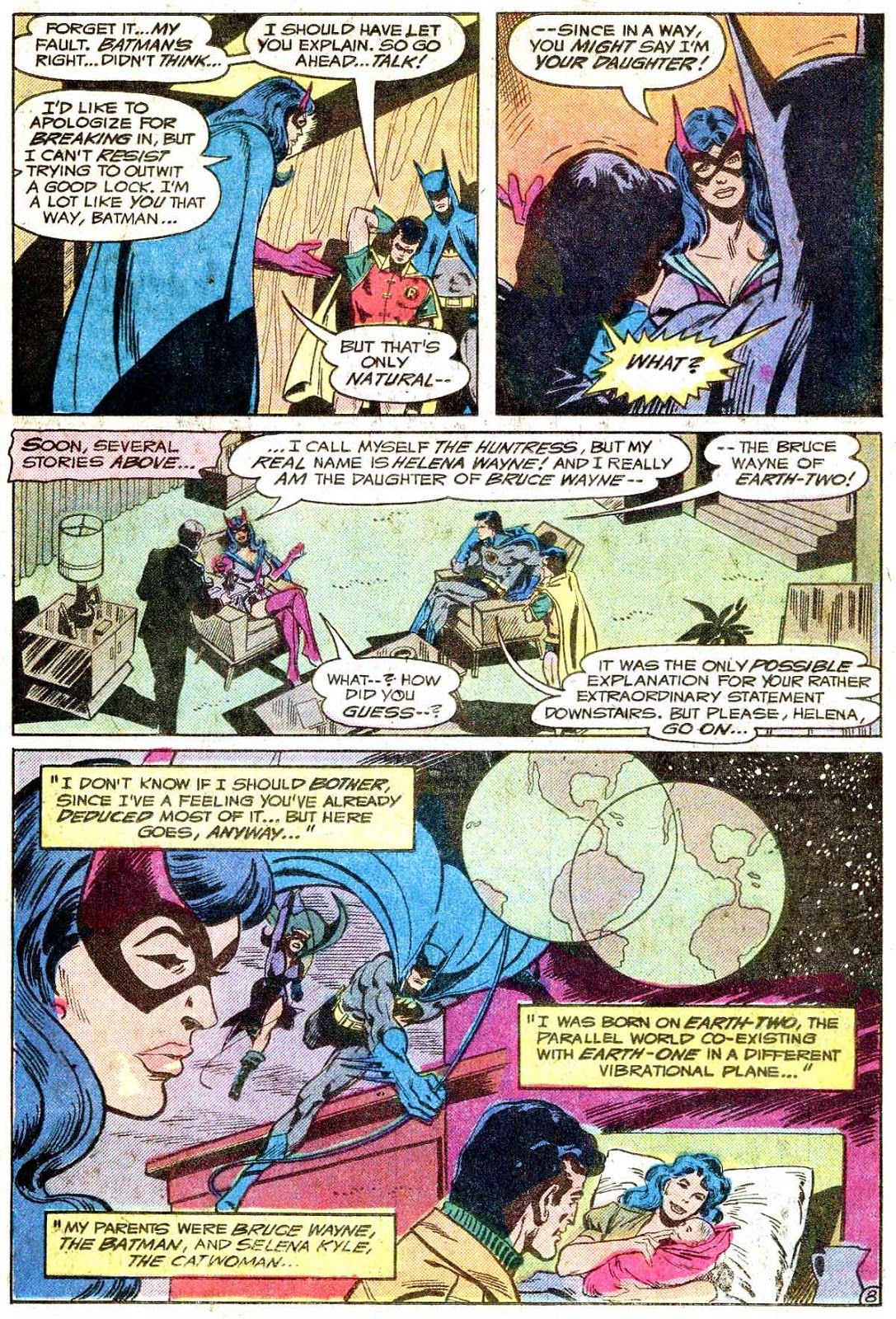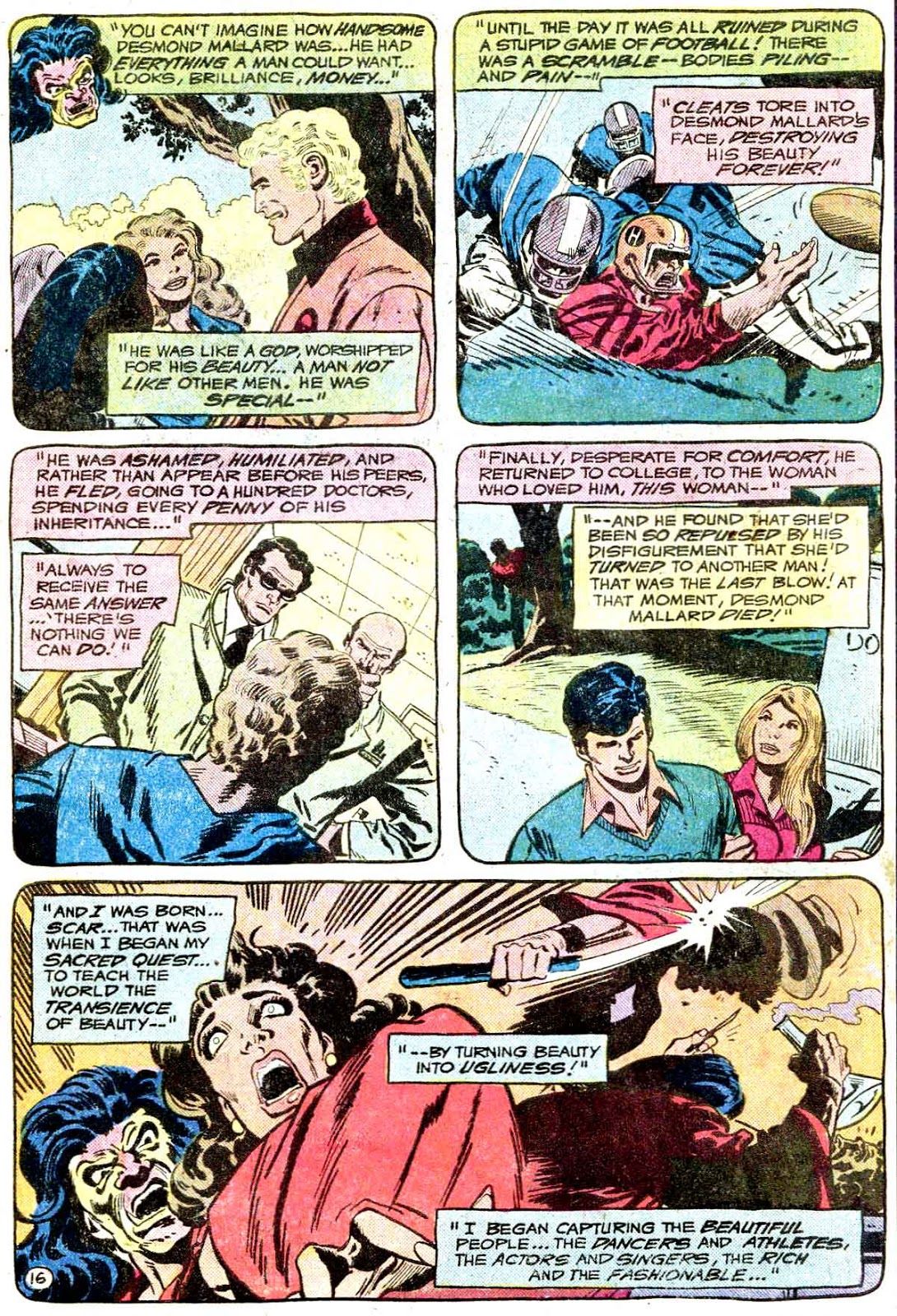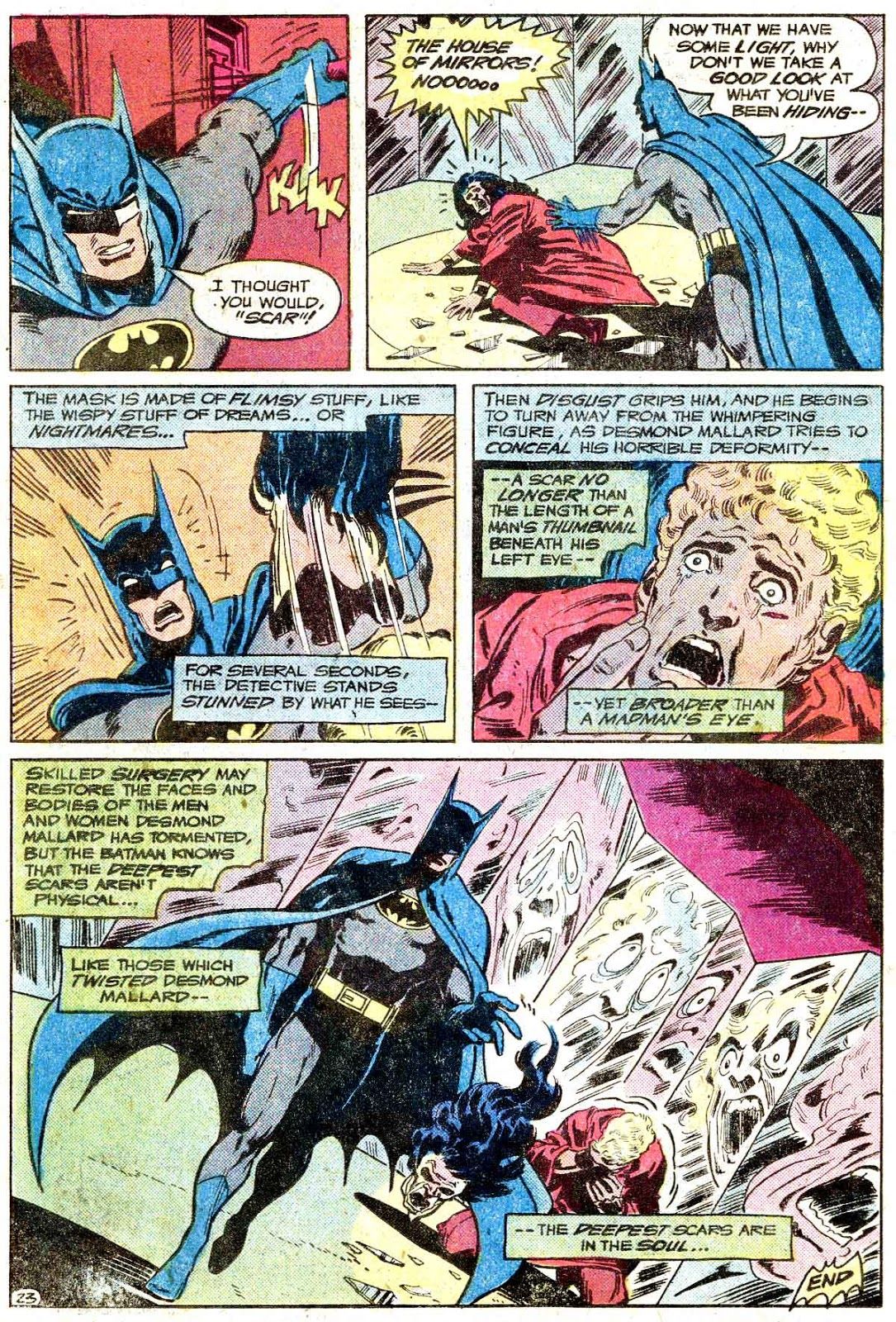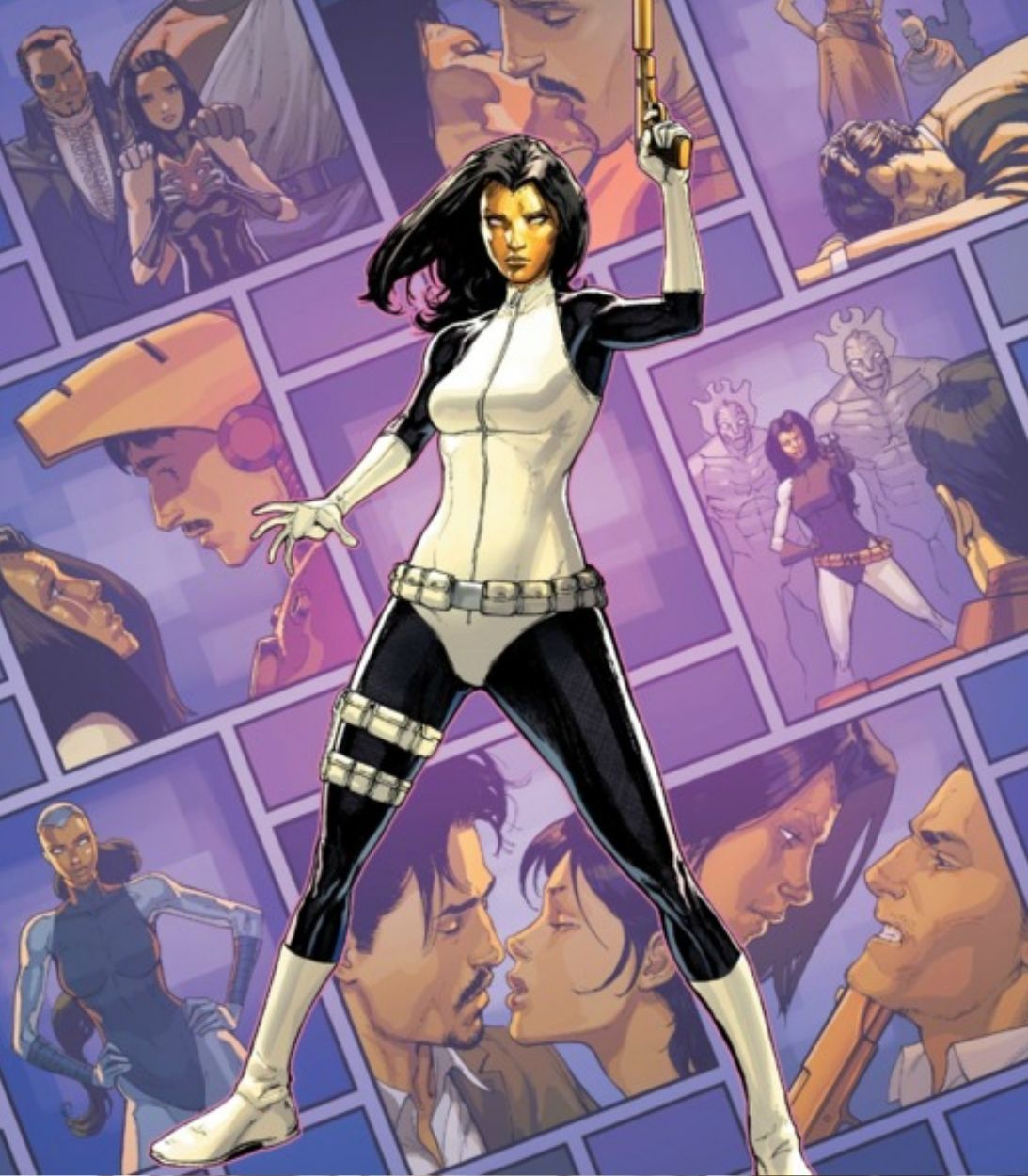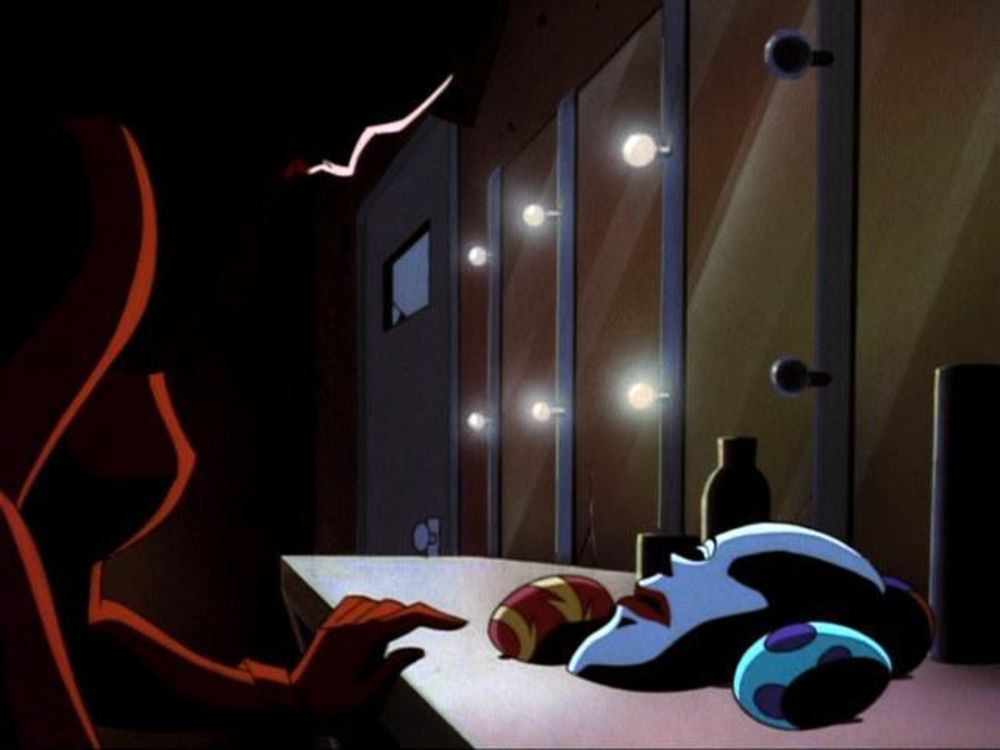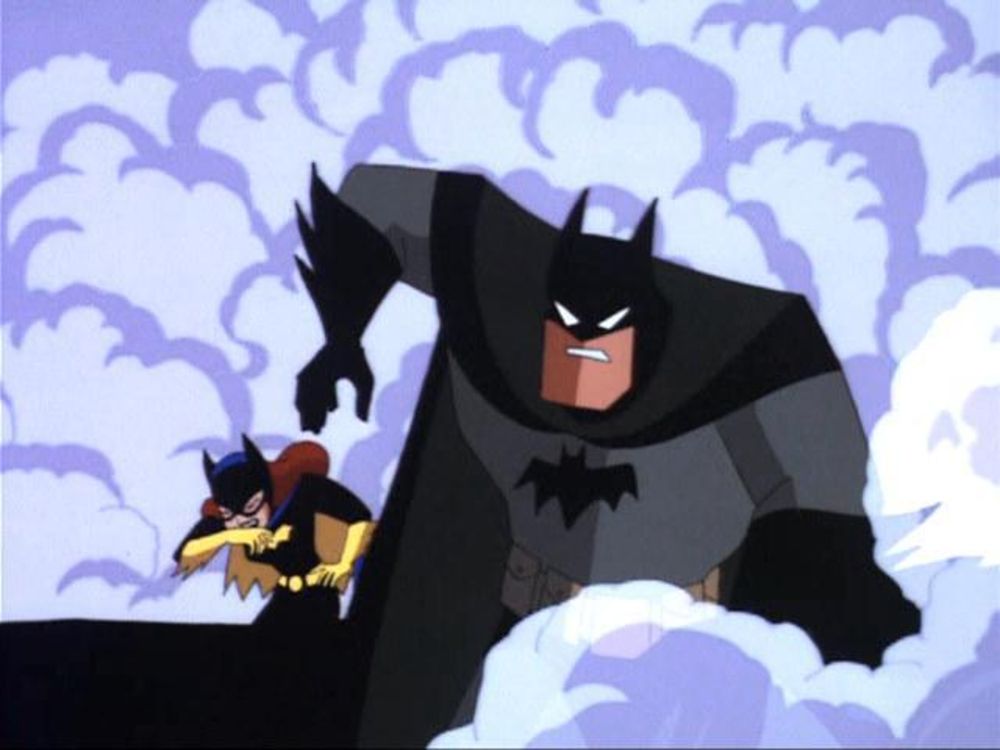Welcome to Adventure(s) Time's 127th installment, a look at animated heroes of the past. This week, a quirky episode of Batman: The Animated Series and the quirky '70s comic that might've inspired it. And if you have any suggestions for the future, let me hear them. Just contact me on Twitter.
Debuting on May 4, 1998, "Mean Seasons" comes from writers Rich Fogel and Hilary J. Bader, with direction from Japanese animator Hiroyuki Aoyama. The premise is one of the oddest in the show's history if only because it feels like something from a 1980s CBS prime-time drama and not a superhero cartoon.
"Mean Seasons" is notable for two reasons. One is the introduction of Calendar Girl, one of the show's few original villains (though not entirely "original.") The second is the animation from TMS-Kyokuichi Corporation, the studio responsible for the best-looking episodes of the series. And there is a segment of fandom that resents the less "important" episodes of the show receiving top-notch animation.
While the premise of "Mean Seasons" is divisive, the writing isn't quite deserving of the derision it's received. Not that the plot is a classic, of course. Just superior to previous episodes like "The Terrible Trio" or "I've Got Batman in my Basement." It's a shame that TMS wasn't assigned the "Mad Love" adaptation, however.
"Mad Seasons" opens with a masked woman and her henchmen kidnapping a fashion designer during a show. She leaves behind a tearaway calendar date as a calling card. Shortly after, Bruce Wayne learns one of his employees is being forced into retirement since he's reached the age of 65. Corporate policy.
Another attack from the "Calendar Girl" at a motor show ends with the head of Gotham Motors being kidnapped, and another date left as a clue. With Batgirl's help, Batman discerns Calendar Girl's identity as Page Monroe, a former model/actress who was fired by the kidnapped victims years ago after turning 30. After visiting her former agent and learning of her failed sitcom pilot (and rumors her face was maimed after botched plastic surgery), the heroes discern her next attack will be at the network's upfronts presentation.
Before launching into another action sequence, the episode pauses for a humorous parody of '90s network television. The new shows previewed by the network include modeling students with laughable acting abilities, a skateboarding teen who is also a cop, and a group of young bikini-clad veterinarians. The producers are actually biting the hand that feeds here -- chasing youth was critical to the WB Network's strategy following its first true hit, Buffy the Vampire Slayer. Not long after this episode's airing, Batman's producers would be having a meeting with the network head, who's decided to halt work on the show in favor of a youthful revamp of the Batman property. The result, ultimately, was Batman Beyond, but this easily could've become a nightmare.
Back to the plot, Calendar Girl evades Batman and Batgirl and kidnaps the network head. To cover her escape, a mechanical dinosaur is sicced on the heroes (though it's ultimately destroyed, so we can't assume this is the same T-Rex that resides as a Batcave trophy.)
Eventually, Batgirl discovers Page Monroe owns an abandoned club called "Faces," a likely spot for her hideout. Before joining her for the closing fight sequence, a more enlightened Bruce Wayne informs his aging employee Bernie Benson that he's discontinuing the company's mandatory retirement policy, which is the kind of wrap-up we typically see as the closing moment of an episode, but it's presumably pushed up due to the twist ending.
The duo confronts Calendar Girl, clad now in black and carrying a scythe to celebrate "the Day of the Dead," distracting her with a broken slideshow of her previous image. She's soon apprehended, and Detective Bullock removes her mask. Calendar Girl screams in anguish, horrified at her true face being exposed. Batgirl notes that Page is still beautiful. Batman tells her that Page can't see this anymore; all she can see today are her flaws.
According to writer Paul Dini, the producers originally wanted to use the classic villain Calendar Man in the show, with Matt Frewer (who played Max Headroom in the 1980s, in addition to Berlinghoff Rasmussen on Star Trek: The Next Generation and numerous other roles) as their ideal voice actor. However, the idea was dropped after the introduction of Calendar Girl. Calendar Man is known for committing crimes that correspond with specific holidays and historical dates, often wearing costumes to correlate with the date of his designated crime.
And while Calendar Man served as some inspiration for this episode, it's worth noting an earlier Batman story features a similar twist. 1978's Batman Family #17 from writer Gerry Conway and artist Jim Aparo is very much a '70s Batman story.
The opening has Batman encountering a young woman whose face has been surgically altered to remove all features. She's irrationally violent and only tamed by the arrival of her alleged boyfriend, Drake, a masked man who claims to also suffer from horrible deformities.
Returning home, Batman and Robin's discussion of the incident is interrupted by the arrival of The Huntress, his daughter on the alternate reality of Earth-Two. She's seeking his advice on life as a crimefighter. It's the first meeting of the characters, causing Batman to muse at the prospect of fatherhood, something he'd never considered before.
It's another angle on the concept of aging, traditionally viewed as a taboo subject in the world of eternally youthful superheroes. Earth-Two specifically existed to provide readers a vision of the characters aging in something close to real-time, dealing with marriage, children, and inevitable death. The "true" versions of the heroes, however, had to be kept away from such dangerous ideas.
Batman suggests Huntress turn to the retired Batwoman, Kathy Kane, for guidance. As luck would have it, she's nearby, touring an amusement park. As it turns out, this park houses a freakshow run by the mysterious Drake. Another coincidence has Robin's girlfriend Lori Elton missing, after agreeing to meet with her former flame, Desmond Mallard. She's left a note, indicating they'll meet at this amusement park.
The climax has Batman encountering a series of deformed bodies hidden away at the park's freak show, all beautiful people punished by the deranged villain named Scar. After imprisoning Batman, his obligatory villain rant reveals his other identities: the Drake that Batman met earlier and one-time Gotham football star, Desmond Mallard.
Robin arrives to aid Batman and free Lori. Batman soon corners Scar in the house of mirrors, where the madman is forced to (literally) face his actions. We learn Scar's angst is actually a projection of his own damaged psyche; his unbearable physical deformity only a tiny blemish on a handsome face.
Sounds like he'd be a match for a one-time supermodel turned supervillain, right?
DESIGN-Y
It's possible the look of Calendar Girl, her catsuit and expressionless mask, is inspired by the Iron Man villain Madame Masque. The producers were cribbing a decent amount from Marvel in this period, with homages to everyone from Madrox, the Multiple Man to Flash Thompson.
The episode also features some great uses of shadows and lighting, some of the best we'll see in the New Adventures era of the show.
HEY, I KNOW THAT VOICE
Calendar Girl is voiced by Sela Ward, who spoke out against the very issue raised by this episode in the '90s, after being told she was too old to play opposite Pierce Brosnan in Goldeneye. She's two years younger than Brosnan.
Tippi Hedren of The Birds fame makes a surprise appearance as fashion designer Donna Day. Perhaps she was stunt-cast due to her past in the fashion industry, but it's an odd performance that doesn't quite gel with the other actors' work.
"ANOTHER SEASON, ANOTHER REASON..."
The central concepts of both stories wouldn't seem to be something of concern to the target demographic. There's likely nothing less relevant to kids than the idea of aging, something that happens to old people, which surely they'll never be. Pre-adolescence, most kids aren't that hung up on physical beauty, either, so stories that center on vanity or the value of self-acceptance likely don't mean much to them.
Still, as long as you're not contorting the characters out of shape, and if you can work in logical pretenses for the fight scenes, these excursions into more adult topics don't hurt anything. They're preferable to stories with no point whatsoever, where characters just run around until it's time for the big fight scene that closes out the episode. The New Adventures era is sometimes guilty of this, likely due to the network's preference for faster moving, more action-heavy plots.
Calendar Girl is difficult to take too seriously. With her beefcake henchmen, preposterous gadgets, and penchant for leaving clues at crime scenes, she feels like something out of the Adam West show. Still, at least there's an idea behind the character. And her debut certainly benefits from some of the nicest animation in the show's history.
Hey, my latest paranormal novel Love is Dead(ly) is now on Kindle Unlimited! Find out what happens when a cocky psychic finds himself trapped in the afterlife with the ghosts he's been chasing!

